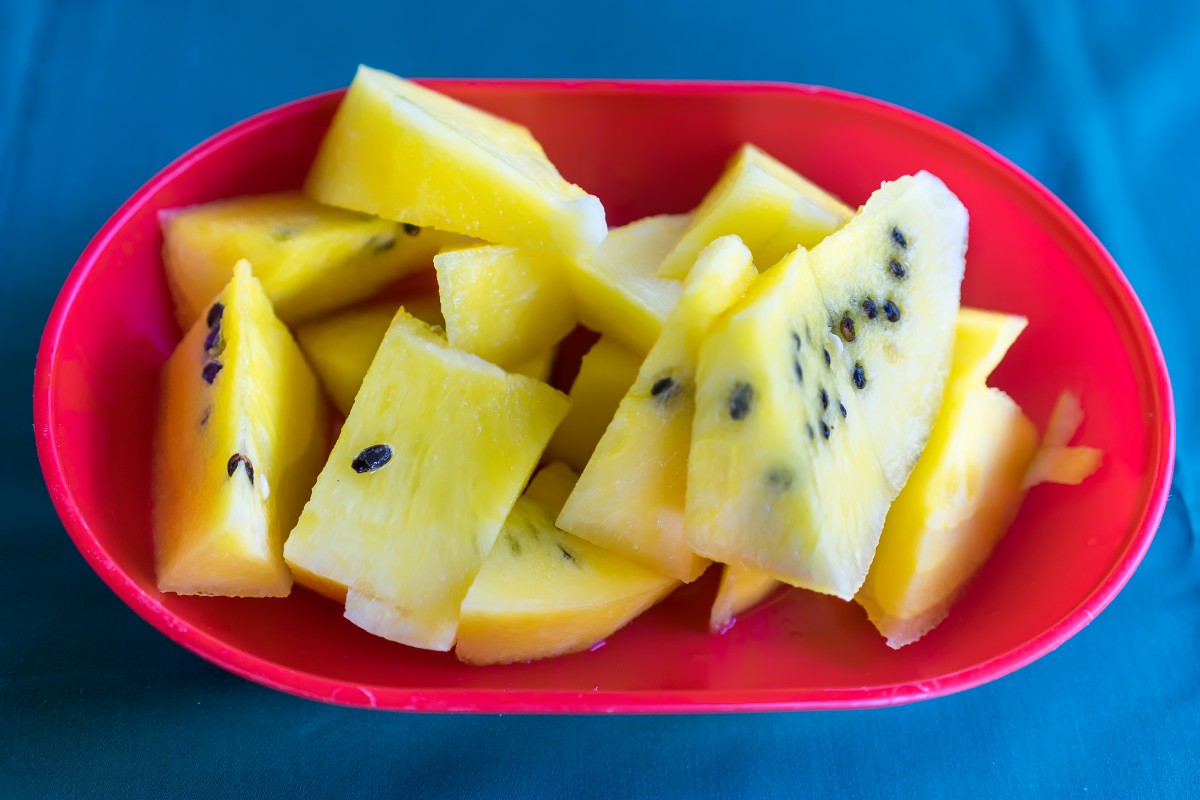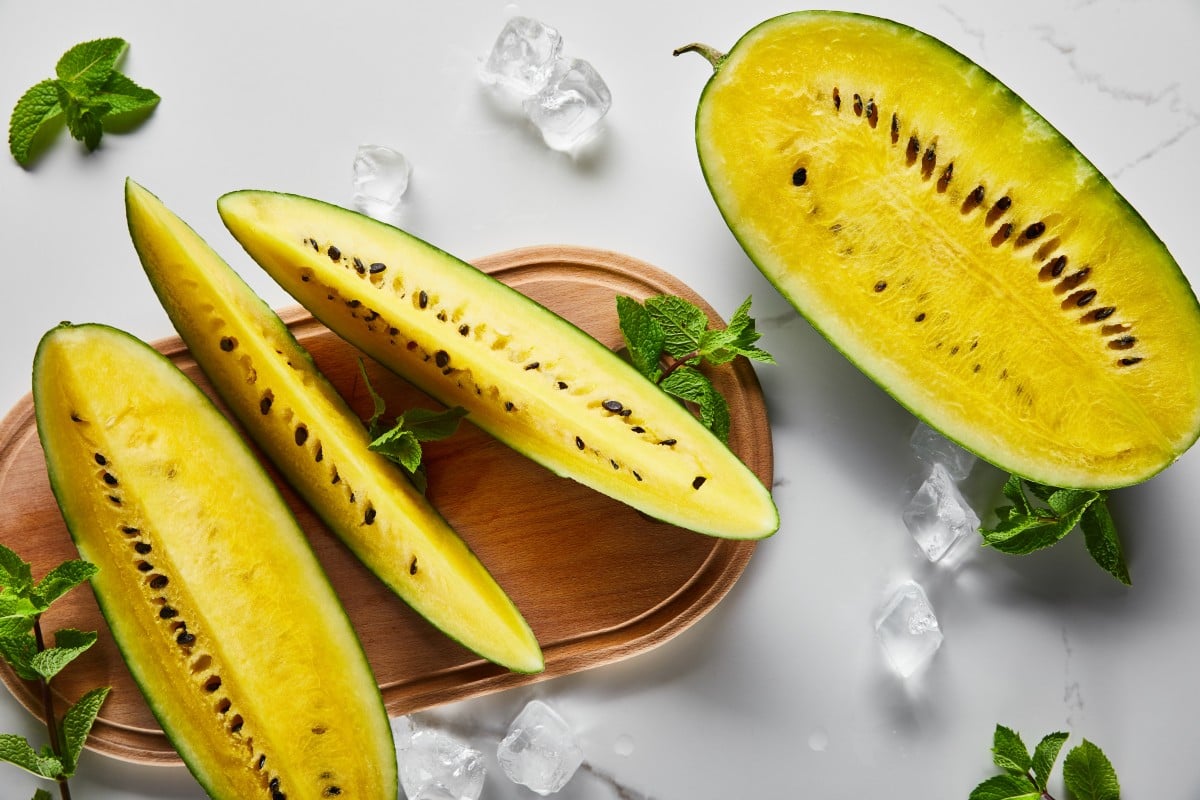Watermelon is a fruit originally brought from Africa, but known and loved all over the world, especially in tropical countries like Brazil, for example. This is because, as they have a very hot summer, these countries are looking for options to cool off, and watermelon, in addition to being very good for health, also hydrates and refreshes those who consume it.
We are all familiar with the traditional watermelon, with its green skin, red pulp and lots of seeds, but now we are going to get to know a very different variant of this fruit. Have you ever heard of yellow watermelon?
This variation of the traditional watermelon is still little known in Brazil, but it has been gaining more and more space in supermarkets and on Brazilian tables. Very soon it will be easy to find yellow watermelon at fairs or markets across the country, so before you start consuming this fruit, here's everything you need to know about it.
Table of Content
The origin of yellow watermelon
Although it exists in nature, the yellow watermelon that reaches the consumer is actually a variation of the red watermelon created by a company called EMBRAPA, which developed two different types of watermelon: BRS Soleil and BRS Kuarah. Both types were developed as a consumer alternative.
This watermelon was also developed thinking about facilitating its cultivation and transport, as it can be grown in various types of soil and, due to being a little smaller and lighter compared to traditional watermelons, its transport is also much easier, thus preventing premature rotting of the fruits.
In order to achieve these specific characteristics, watermelon underwent a conventional hybridization and breeding process, thus giving it a yellowish color, a size and weight different from conventional ones, and a lower amount of seeds compared to red watermelon.
Yellow watermelon in Japan?
The square watermelon in Japan has become popular again for now, despite having been around since the Edo period. Unlike the yellow melon, the watermelon was not popular for its color and lighter flavor.

Main characteristics of yellow watermelon
The main characteristic that differentiates the yellow watermelon from the others is its richness in a pigment called carotenoid. It is this pigment that gives the yellow color to this fruit, and it can also be found in carrots, for example. The red watermelon, in turn, is rich in lycopene, the pigment that gives it its reddish color.
Despite looking quite different, yellow watermelon also belongs to the Cucubitaceae family, just like the traditional red watermelon. In this sense, the yellow watermelon also differs in size, being slightly smaller than traditional watermelons, and in the number of seeds, having much fewer seeds than the red one. Additionally, in some variations, there are edible seeds present.
Also, this watermelon weighs between two and six kilos, and it ripens much faster than its red sister. In other words, it can be harvested in less than sixty days, while red watermelon takes around eighty days to ripen and be ready for harvest.
In this way, it is also possible to avoid the appearance of pests and diseases in the plantations. In addition, yellow watermelon is present in other variations around the world, especially in colder countries like Japan and Russia.

benefits of yellow watermelon
Everyone knows that watermelon has many health benefits, and the yellow watermelon is no different. It has all the qualities of a common watermelon, but with the addition of having an abundance of carotenoids , the substance that gives the fruit its yellowish appearance, transformed in the body into vitamin A, which is mainly associated with the prevention of vision problems.
In addition, because it has some diuretic properties, it is highly recommended by doctors for people who suffer from a kidney problem. These properties also help people who are in the process of losing weight, for those who have high blood pressure and gout.
Another disease that yellow watermelon helps prevent is asthma. Due to its high content of zinc and vitamin C, this fruit helps to maintain and dilate the respiratory tract, thus preventing the recurrence of asthma. It can also help strengthen bones, as it also contains potassium and calcium, which are essential for bone growth and strengthening.
Other facts about yellow watermelon
There are many ways to consume this fruit, as well as red watermelon, you can add it to foods such as salads, fruit smoothies, make juices or just consume it normally as you do with red watermelon.
The storage of this fruit is very easy, if it is uncut, it can stay on the counter for up to two weeks. After being cut, it is important that the exposed part of the fruit is covered with plastic and stored in a refrigerator, so it will last about 3 to 5 days.
So, did you feel like trying the yellow watermelon? If you are thinking of buying or planting yellow watermelon, know that its price in Brazil is around R$ 18.00 for ten watermelon seeds. You will certainly not regret putting this delicious and nutritious fruit on your summer menu.
